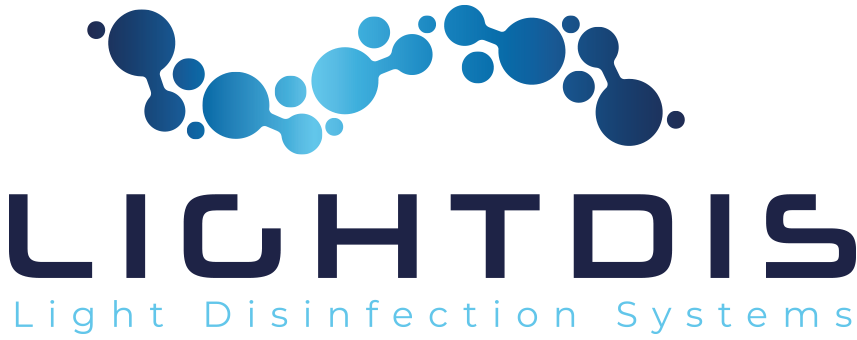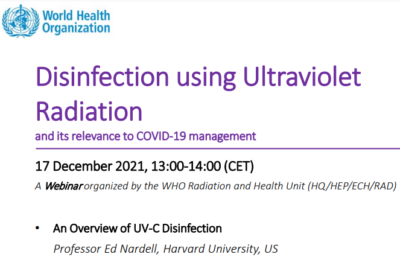On December 17, the World Health Organization organized an informative webinar on the potential of Germicidal Ultraviolet Light, Ultraviolet-C, in the context of Covid19 aerosols infection prevention indoors.
Part I of the webinar was conducted by Professor Edward Nardell,



Department of Public Health, Immunology and Infectious Diseases, Harvard University Schools of Medicine and Public Health. Professor Nardell is an expert in the control of airborne infectious diseases with 40 years of experience. His achievements include; his contribution to the control of the antibiotic-resistant tuberculosis outbreaks that wrecked havoc the United States of America during the 80s, through the use of the application of Germicidal Ultraviolet light known as Upper-Room UVGI (Ultraviolet Germicidal Irradiation); and the demonstration that the Upper-Room application is effective in preventing the transmission of airborne diseases, as TB, at least 80% by itself, without taking into account other contagion prevention measures.
* Tuberculosis, for those who do not know it, is transmitted by aerosols in indoor environments, like SarsCov-2, and the doses of ultraviolet light necessary to inactivate both pathogens are practically the same. Slightly smaller in the case of the SarsCov-2.
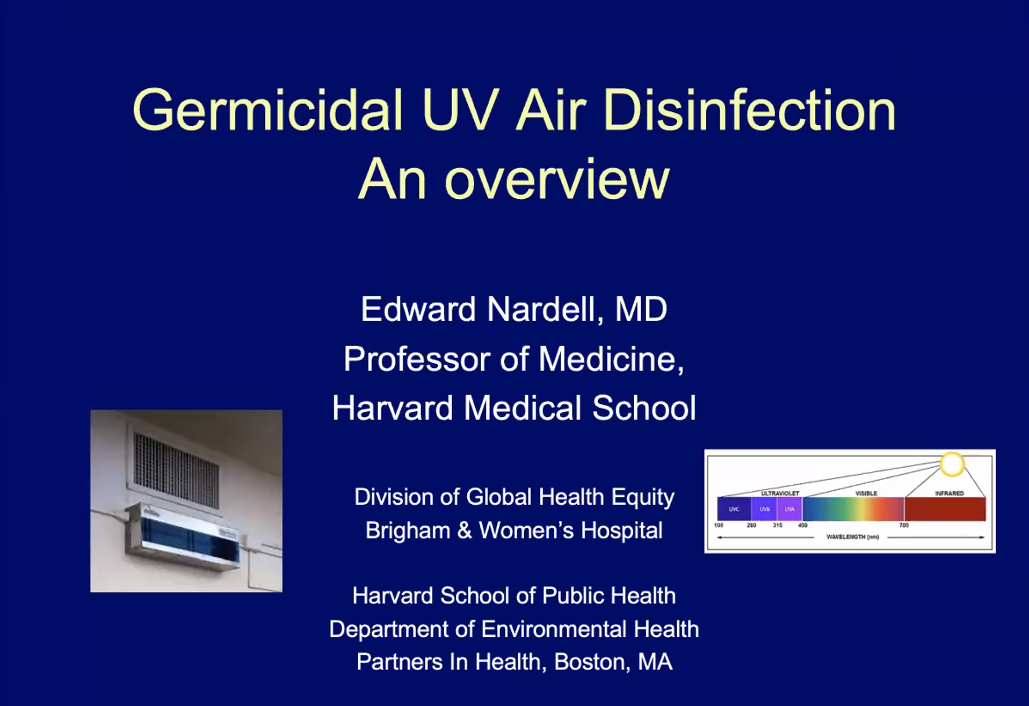
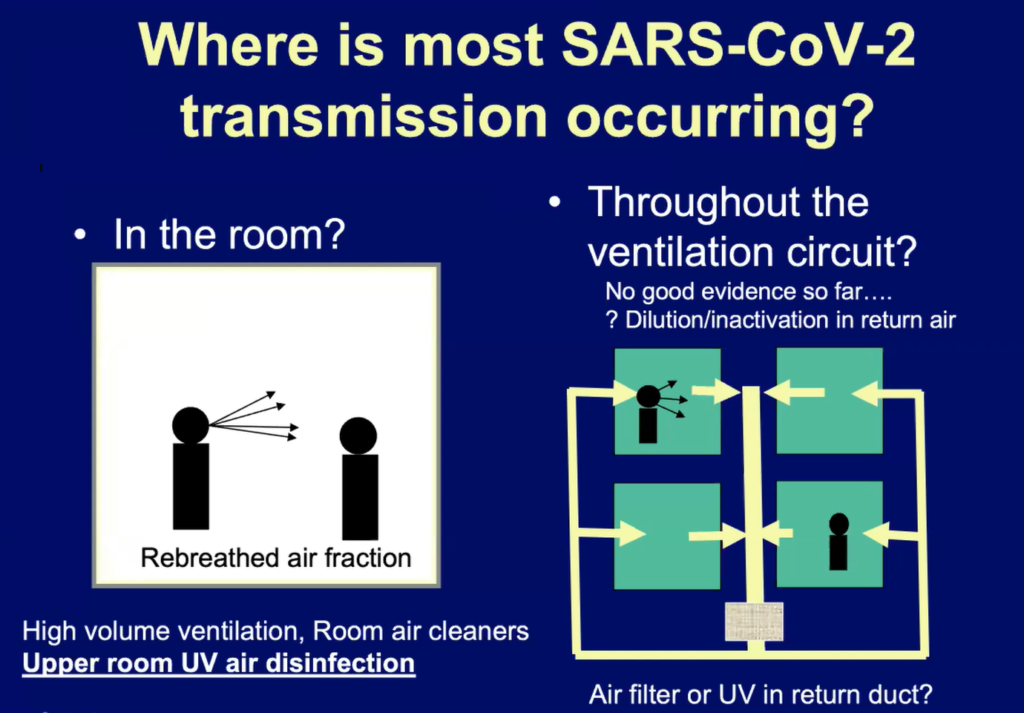
The main aspect to begin with is to establish where, mainly, the contagion or transmission through aerosols takes place in an indoor environment. The slide shows the two options that could be thought of as reasonable, for any building or interior space:
- The infections occur between people who are exactly int the same room as the person infected with the virus.
- If the building has an HVAC system, the infectious aerosols emitted by a contagious person, and transported through the ventilation ducts, could infect people who are in different rooms.
In Nardel’s own words: “Even in my own University there have been proposals to install HEPA filters in the HVAC system, as primary intervention to reduce the transmission of infections, but to date I still need solid evidence of transmission of Covid19 to through ventilation systems. It could occur, and perhaps someone has already described it, but so far there is not enough evidence. The evidence suggests that, for contagion to occur, it is necessary to share the same air and in the same room where the contagion is occurring. This is extremely important, because it tells us where to carry out the intervention to avoid contagion”.
The intervention must be carried out in the same place where the contagion occurs, that is, in the room itself.
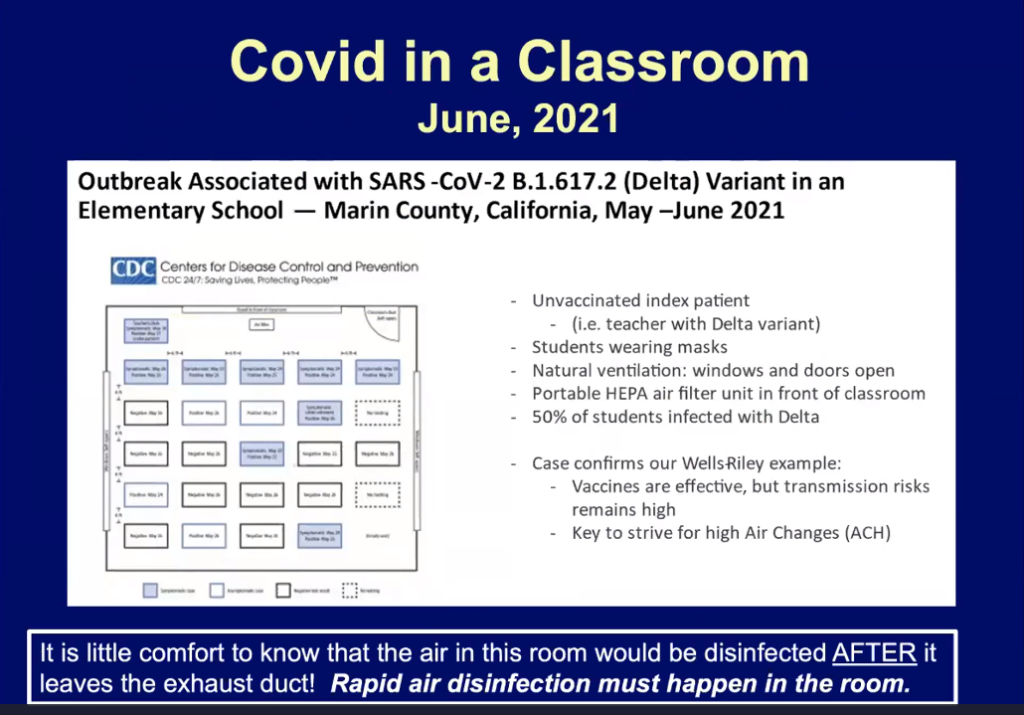
In June 2021, in a California school, a Covid-19 transmission event occurred, resulting in half of the students infected with the Delta variant. The conditions in the classroom were natural cross ventilation with open windows and doors, Air Purifier with HEPA filter, and the students wore masks. It can be easily seen in the image, how the incoming air flow through the windows (left side), dispersed the infectious aerosols emitted by the teacher (infected with Delta), towards the door (right). The blue squares represent the students with confirmed contagion.
Prof. Nardell “Here we have a good example of transmission in the same room. It is clearly appreciated how the crossed air flow has dispersed the aerosols from the position of the teacher (infected) near the windows towards the door, resulting in the infection of half of the students. It is embarrassing to think that this indoor air could have been disinfected in the air conditioning duct, after having infected the students. This fact confirms that the air disinfection intervention to reduce / avoid contagions must be carried out in the same room where contagion occurs “
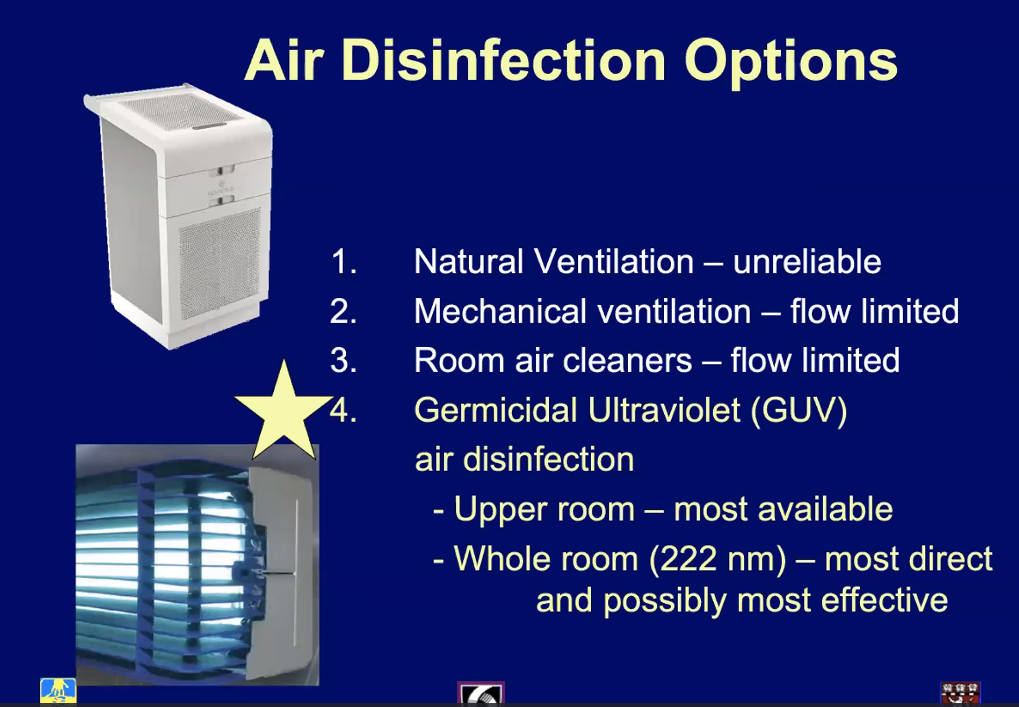
The options for disinfection / indoor air treatment are relatively few. Nardell describes each of them as follows:
- Natural Ventilation: “It is the most basic option for air treatment, opening doors and windows, and probably this is the most widespread option in the whole world. However, its effectiveness in preventing infections is unpredictable, since it depends on the weather conditions outside, the design of the building, where the windows are, when they are open, when they are closed, etc”.
- Mechanical Ventilation: “The air flow it provides is limited. You can obtain several air changes per hour with a well-dimensioned HVAC system operating at full capacity, but it is very expensive, given that the energy cost of heating or cooling that air is very high“. In cases where there HVAC, it is normal for the system to provide between 1 and 3 air changes per hour. This in itself is energy expensive. Increasing the performance of an air conditioning system to provide only 6 air changes per hour is not always possible for structural reasons, and in those possible cases the energy cost is very high. In order to avoid the transmission of infections in a high percentage, serve as a reference that an operating room has a standard of at least 12 air changes per hour.
- Portable Air Purifiers: “devices like the one on the slide, for example, that can contain filters, ultraviolet light or something else inside to clean or disinfect the air. Like mechanical ventilation, they are limited by flow, since there is a limited amount of air they can process through it “
- Upper -Room Germicidal Ultraviolet: “The slide shows a typical Upper-Room luminaire for wall installation. Upper-Room UV, is the most widely used application, and available for disinfection of the air in interior spaces.”
There is a new application of UV-C Light for whole room irradiation, with 222nm wavelength, known as Far-UVC or Far Ultraviolet-C, which is promising but needs further research to really determine its effectiveness in situations real, greater development to lower its cost, and a change in the regulatory framework that allows its effective application.
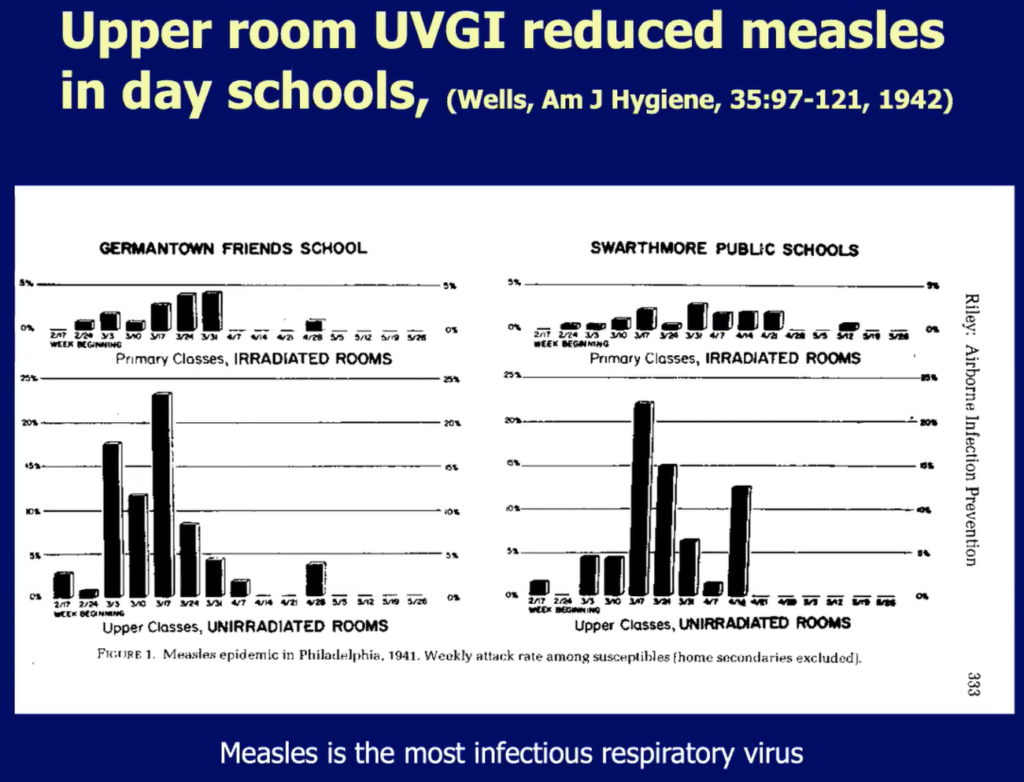
There are very few epidemiological studies on the control of epidemics through indoor air disinfection. The present study is one of the exceptions, it was carried out in Philadelphia in 1942, to study the effectiveness of the Upper-Room Ultraviolet Germicidal application in preventing measles infections in schools.
Measles is considered the virus transmitted by aerosols with the highest infectivity. It is considered that for each individual infected with measles, 18 more people are infected. This same infectivity value has been suggested by some researchers to refer to the infective capacity of the SARSCOV-2 OMICRON variant.
The present study, described by Nardell as an “Exquisite Epidemiological Study”, was carried out in two different schools, where Upper-Room luminaires were installed in primary classrooms, since children of these ages are more susceptible to the disease. The control group was assigned to students in Upper Classes, less susceptible to measles, where the Upper-Room Ultraviolet equipment was not installed.
In the slide, a very similar epidemiological curve is observed in both schools, with data on infected week by week. The effectiveness of the Upper-Room air disinfection system is more than evident, avoiding contagions in classrooms against the most infectious airborne virus. “Likewise, more recent studies such as the one at Livermore Hospital, in California, and given that they had Upper-Room luminaires that were initially installed for tuberculosis control; they recorded a 90% reduction in flu cases”
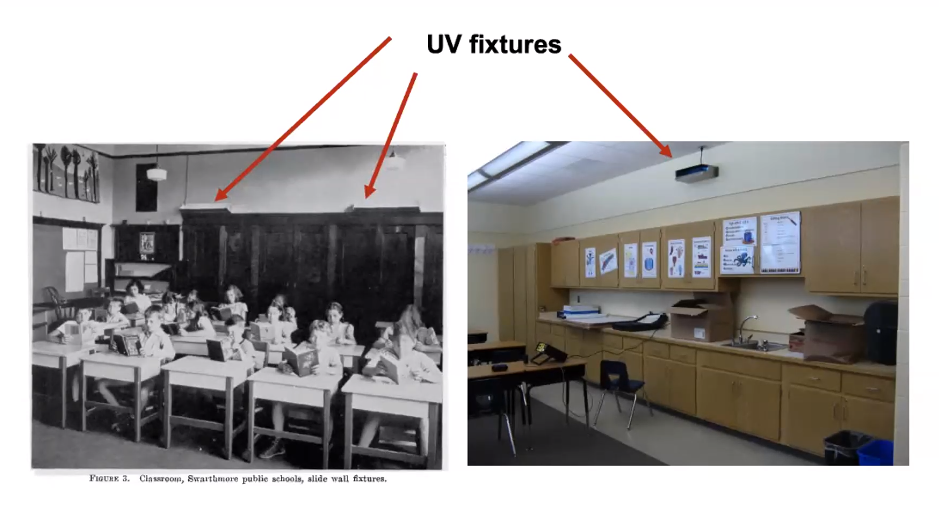 In the image on the left. Upper-Room fixtures during the measles study. On the right, an image of a classroom with a contemporary fixture installed.
In the image on the left. Upper-Room fixtures during the measles study. On the right, an image of a classroom with a contemporary fixture installed.
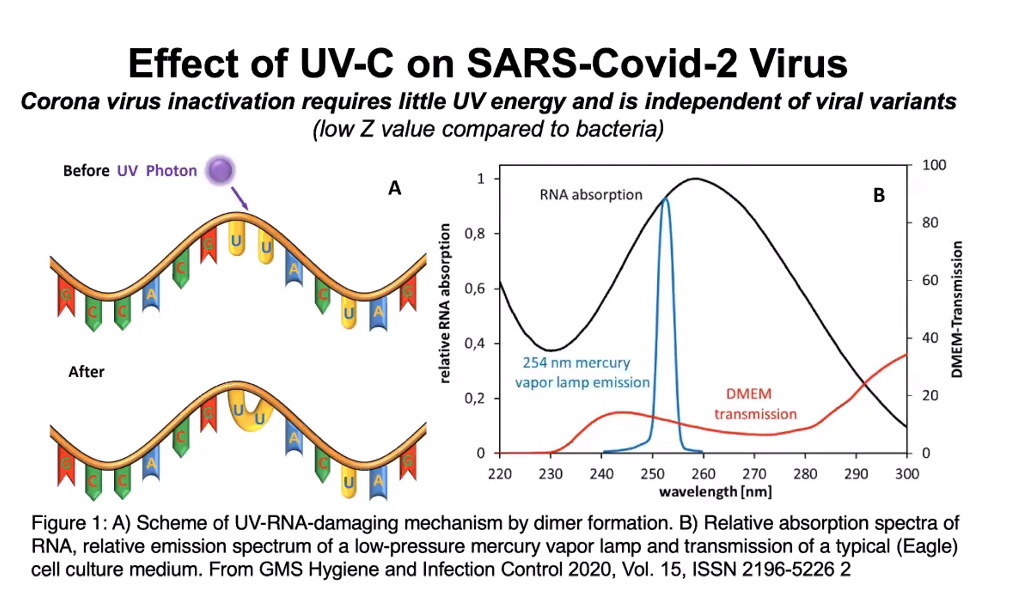
Sars-Cov-2, like any other virus and / or bacteria, is susceptible to UV-C or Germicidal Light. The effect of light on pathogens causes damage to their genetic material, preventing their ability to infect. In the specific case of SARSCOV2, the dose, or amount of ultraviolet light necessary to inactivate it, is very small. 99% inactivation is achieved with doses of 1500 microjoules / cm2. An installation with LIGHTDIS Upper-Room achieves this 99% inactivation in just 50 seconds, and 90% in 20 seconds, the system being safe and applicable in the presence of people.
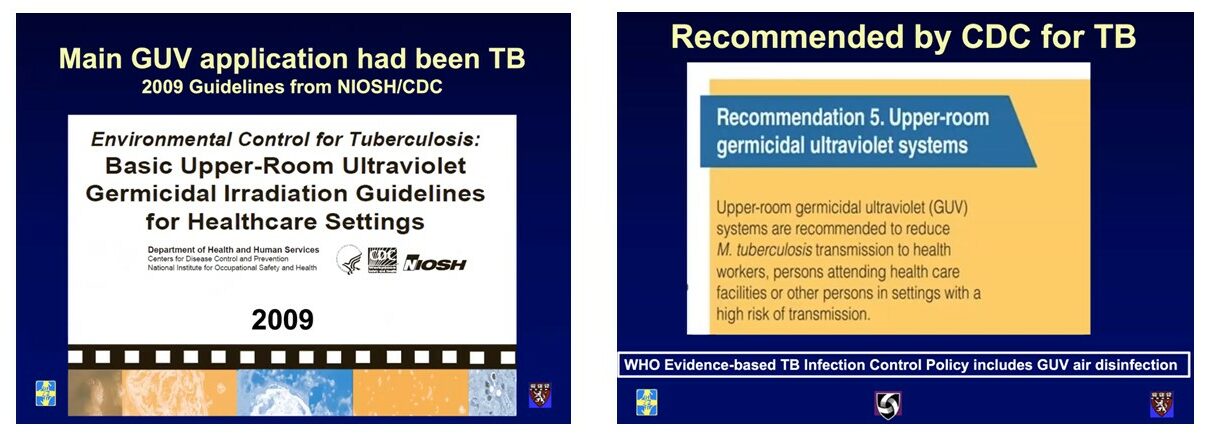
The Upper-Room Ultraviolet Germicidal technology has already been seen with the application case against measles in schools, which is not new at all.
Given its high efficiency in preventing infections by aerosol-transmissible diseases, and its widespread application specifically against tuberculosis; Institutions such as the CDC or the World Health Organization have already endorsed its use for the environmental control of the disease and published Technical Guides for its installation, use and maintenance.
Currently, both CDC and WHO institutions, among others, recommend its use for the control of COVID19 in indoor environments.
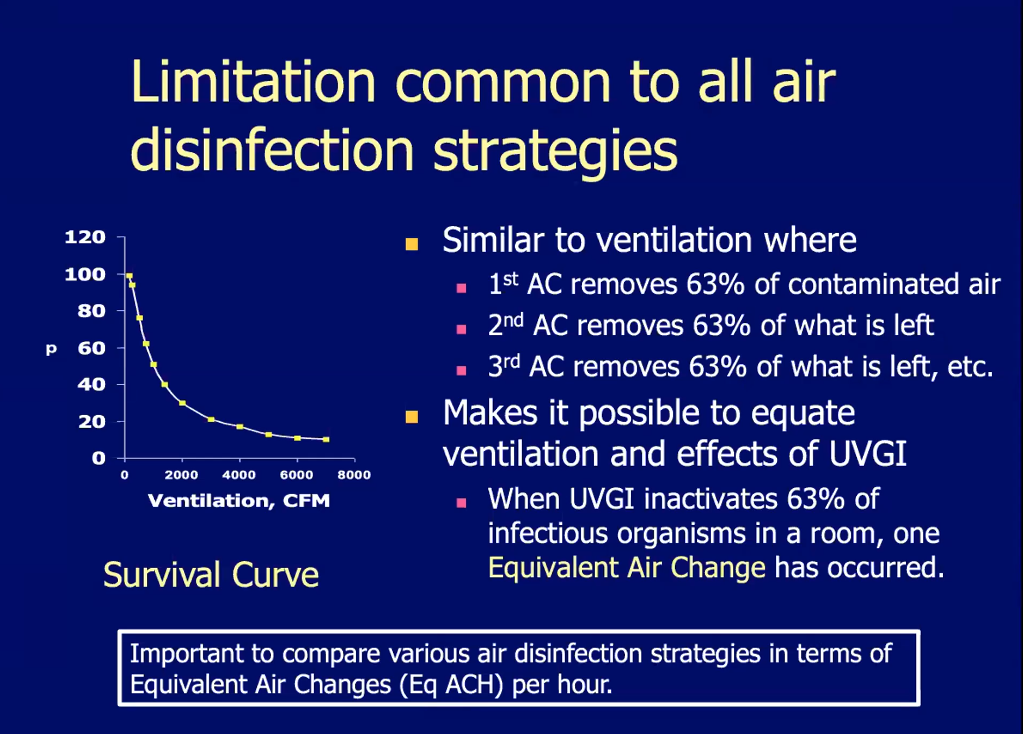
There is a common limitation to all the disinfection options discussed: Natural ventilation, Air conditioning, Portable Air Purifiers and Germicidal Ultraviolet Upper-Room. In explanation of Prof. Nardell, “This limitation allows to establish comparisons of effectiveness between the different disinfection options. This is known as Target-Theory and is based on air changes per hour:
- Imagine a room with air that contains infectious aerosols, no more. In theory, a complete change of the air in a room removes 63% of infectious aerosols (1ACH)
- A second complete renewal of the air in this room would eliminate 63% of the infectious aerosols that were not eliminated with the first renewal (2ACH). And a third renewal would eliminate 63% of the infectious aerosols that were not eliminated with either the first or the second air renewal (3ACH). And so on”
This theory, explained by Nardell, allows the comparison in terms of elimination of pathogens, between ventilation and Upper-Room Ultraviolet Germicide. “When the Germicidal Ultraviolet inactivates 63% of the pathogens or infectious aerosols in a room, we say that the equivalent of a complete air change has occurred in it, 1 eqACH. This system allows to compare different disinfection strategies in terms of ACH” (Air Changes per hour).
“This allows us to understand why when there is a continuous generation of viruses in a room (infected people) very high rates of ventilation are needed. The CDC establishes between 6 and 12 ACH generated by mechanical ventilation for a clinical / hospital environment, which in cases of strong virus emission (several infected and/or high virus infectivity such as Delta and now even higher with Omicron) may be insufficient. The higher the virus infectivity, the higher the ACH must be to achieve the desired protection effect, however, achieving this, must be affordable and reasonable energetically and economically, and in this sense mechanical ventilation that involves heating or cooling the air is neither reasonable nor feasible”.
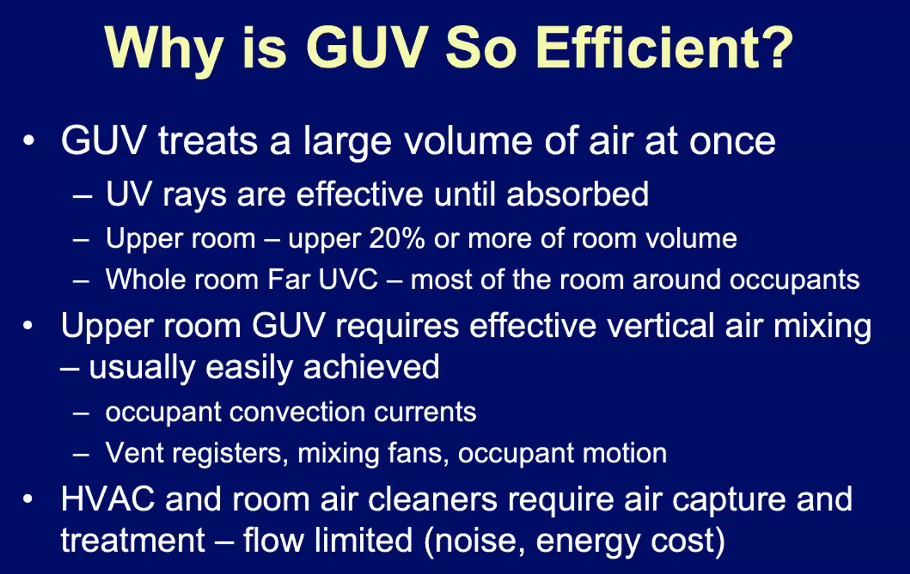
Upper-Room GUV (Germicidal Ultraviolet), disinfects large volumes of air at once and uses the convective movement of air, which naturally occurs indoors:
- Hot air rises indoors. This is the case of exhaled air. The aerosols generated by people are hotter than the air in the room, therefore they tend to rise and concentrate on the ceiling. Like cigarette smoke would.
- Cold air descends indoors. The aerosols concentrated in the upper part, cool down slowly and descend, being distributed throughout the room.
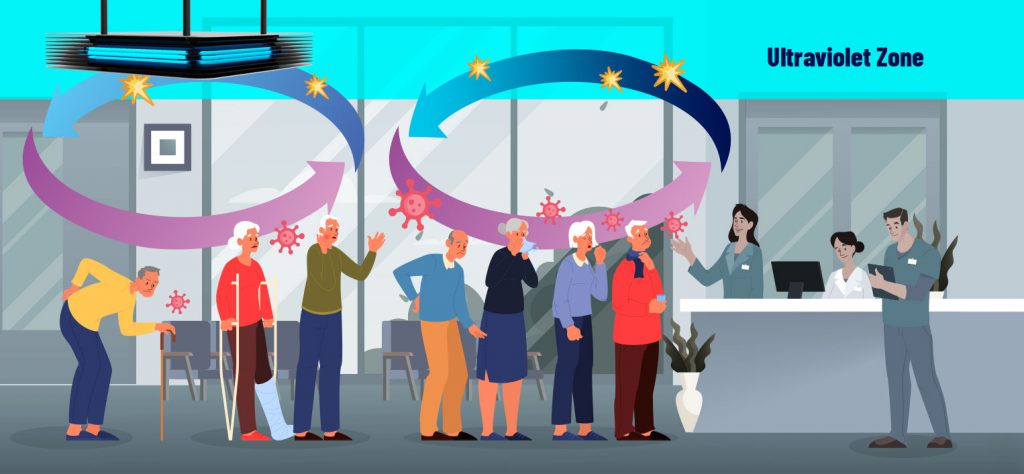
If we install an Ultraviolet Upper-Room fixture on the ceiling, we will inactivate the aerosols in the place where they are concentrated (the upper area/ceiling of the interiors) disinfecting those in seconds, thus avoiding that when aerosols cool down and descend they produce contagions among the people who occupy that space. The minimum effectiveness, measured in a real situation, of this application avoiding contagion caused by aerosols is 80%. All this happens without noise, and at the energy cost of a light bulb.
Other options, such as mechanical ventilation or portable HEPA air purifiers, cannot disinfect or clean polluted indoor air all at once. They first need to capture/aspirate the aerosols in order to inactivate them. This fact implies that these options take much more time to eliminate infectious aerosols from a room, so much so that their effectiveness in preventing infections is very low compared to Upper-Room. In addition, they are options that in their more powerful versions with the intention of generating greater air flow, generate much more noise, imply a much higher energy cost and even so their effectiveness in preventing infections is still much more limited.
For doing a simile; Let’s imagine a swimming pool with dirty water (this water represents the air in our room). To clean the water, the germicidal ultraviolet light emitted by an Upper-Room system would clean the water of dirt in seconds. However, with the option of mechanical ventilation or portable HEPA purifiers, it would be like little by little scooping the water, filtering it, and returning it clean to the pool.
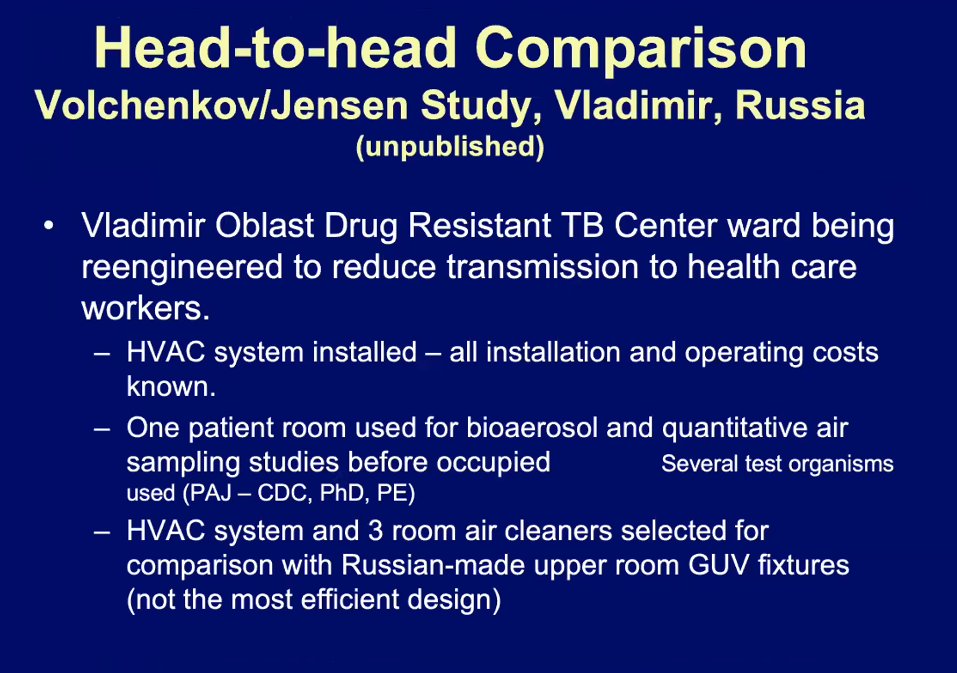
DIRECT COMPARISON
The Vladimir Oblast Clinic, for the treatment of tuberculosis patients infected by TB variants resistant to antibiotics, in Russia, carried out tests between different options to mitigate the risk of contagion with the intention of protecting its workers.
- Knowing the installation and operation costs, the effectiveness in reducing the risk of contagion of the following options was studied: Mechanical Ventilation, 3 different models of Portable Air Purifiers, and a Russian design of Ultraviolet Upper-Room Fixture not particularly efficient.
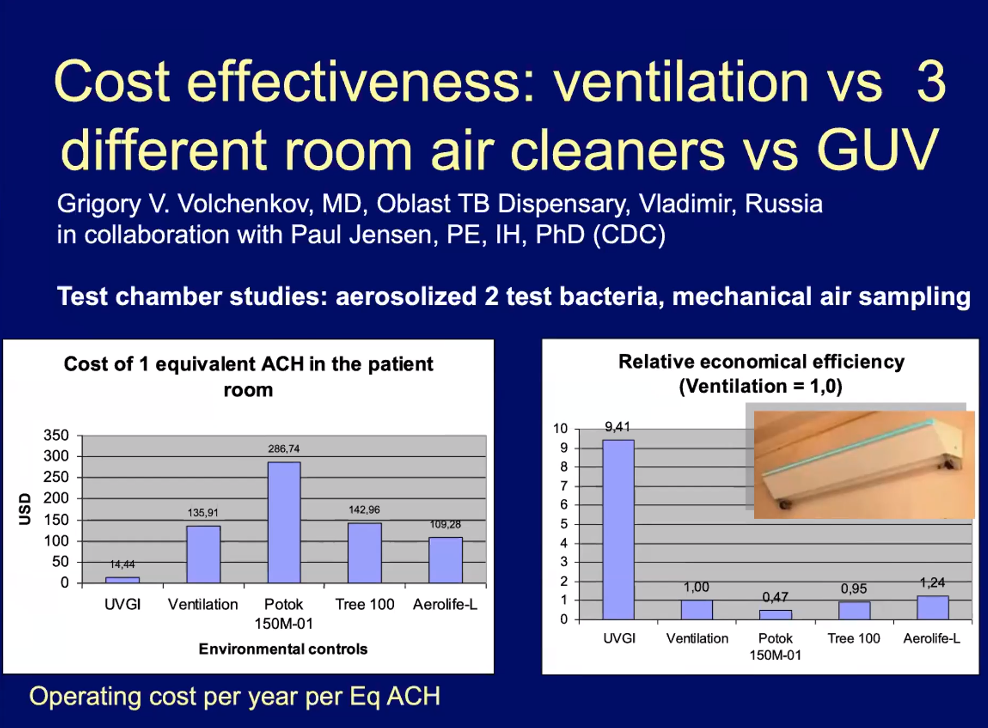
RESULTS
The Annual Operation Costs to produce only 1 ACH in terms of disinfection were:
- Upper-Room Ultravioleta: 14,44$
- Mechanical Ventilation: 135,91$
- Purifier Potok 150M-01 (plasma): 266,74$
- Purifier Tree 100: 142,96$
- Purifier Aerolife-L: 109,28$
The Cost/Effectiveness eliminating pathogens in the room’s air on a 0-10 scale, (the pathogens used for the test were bacteria. In general they are less susceptible than viruses to ultraviolet light).
- Upper-Room Ultravioleta: 9,41
- Mechanical Ventilation: 1
- Purifier Potok 150M-01 (plasma): 0,47
- Purifier Tree 100: 0,95
- Purifier Aerolife-L: 1,24
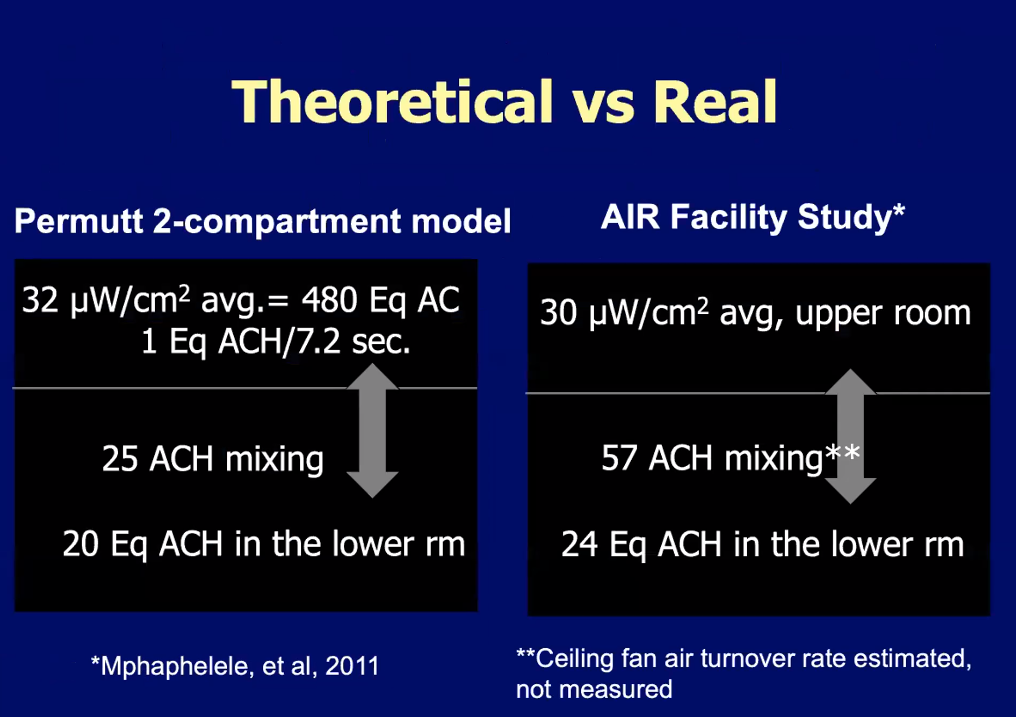
Experiences in real circumstances help to clarify what until then were estimates and theories.
As Nardell explains; Based on previous studies, knowing the irradiance of Germicidal Ultraviolet Light that is applied in the upper part of the room, the dose of Ultraviolet that each pathogen requires to be inactivated, the corresponding produced equivalent of ACH (air changes per hour in terms of disinfection) in the upper area of the room and assuming convective air movement in the room, we can determine the amount of air changes per hour, eqACH, are taking place in the area occupied by people (lower room).
Laboratory models indicate that with an Ultraviolet Upper-Room system, which provides an average irradiance of 32microwatt/cm2 in the upper area, they translate into the equivalent effect of 20 ACH in the area occupied by people.
This same experience carried out in a real setting, specifically a tuberculosis treatment clinic, confirms the laboratory model: a mean irradiance of 30microwatts/cm2 provides the equivalent effect of 20-24 ACH.
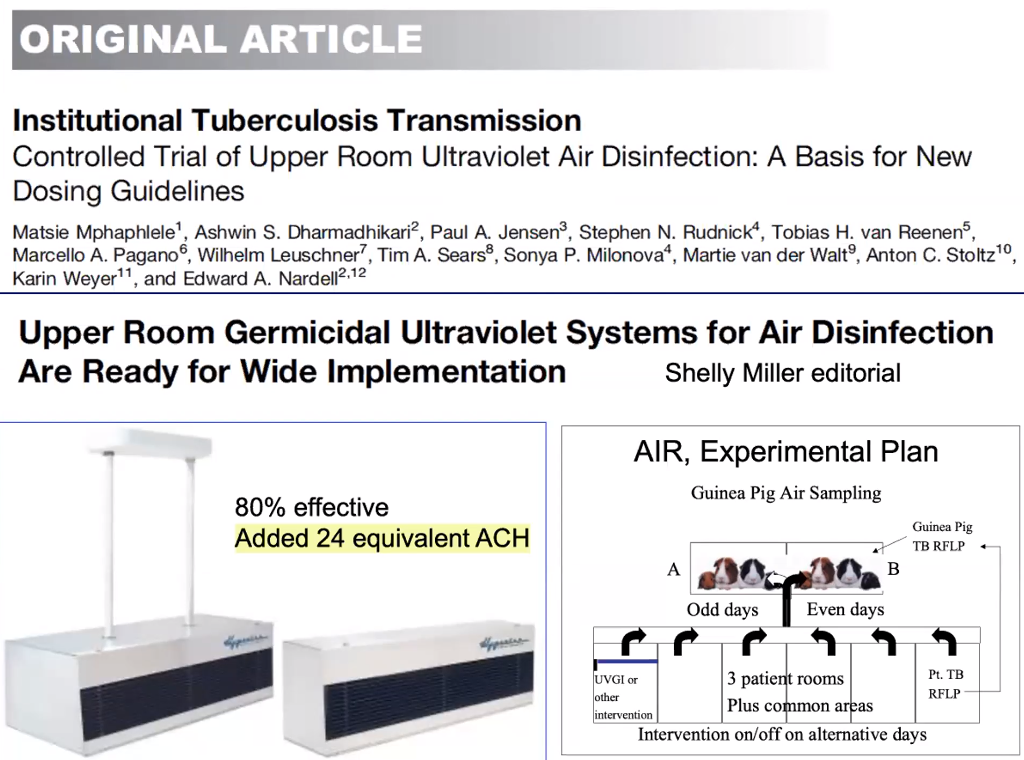
The experience in the tuberculosis treatment clinic basically consisted in that the air in the rooms with tuberculosis patients was transported to chambers with guinea pigs. Guinea pigs are infected exactly the same as people, and for 6 months it was measured how effective is the use of the Upper-Room Ultraviolet Germicidal application in preventing contagion.
For this, the equipment was installed in the patients’ rooms, so that during part of the experiment they were turned on, therefore the guinea pigs received air disinfected by the action of ultraviolet light; and during another part of the experiment the Upper-Room equipments were turned off, the guinea pigs received air without disinfection.
In the end, the effectiveness of the Upper-Room UVGI system was measured 80% avoiding infections, and an equivalent contribution of 24 ACH.
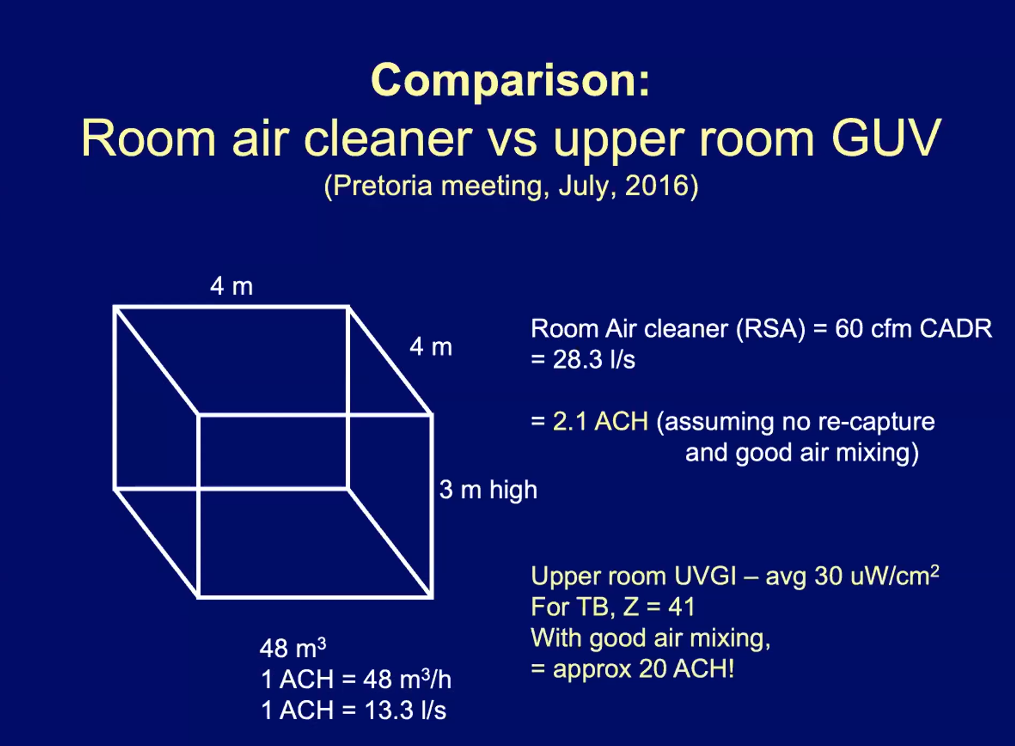
How Effective Would a Portable Air Purifier Have Been?
(no matter the type: Plasma, HEPA, UV …..)
- The volume of the TB patients’ room was 48m³, therefore 1ACH is equal to an air change of 48m³ / hour, which is equivalent to 13.3 liters / second.
- The CADR (clean air delivery rate or rate of filtered air supplied by the purifier) is 28.3 liters per second, which is equivalent to 2.1ACH, assuming it does not recapture air and good convection conditions (the effect of recapture is common to most portable air purifiers)
- Upper-Room Ultraviolet Germicidal, supplying an average irradiance of 30microwatt/cm2 in the ceiling area, equivalent to 20ACH, in good convection conditions (easily achieved by ceiling fans, HVAC)
* Recapture Effect on Portable Air Purifiers:
The proximity between the air intake and air outlet ports generates a recapture effect of the already filtered air. In this way the purifier filters air that has already been filtered over and over again, which translates into a very low real efficiency to clean large volumes of air such as those in a room.
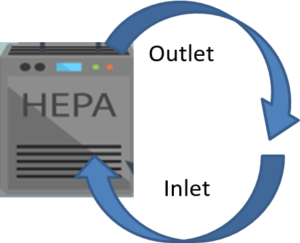
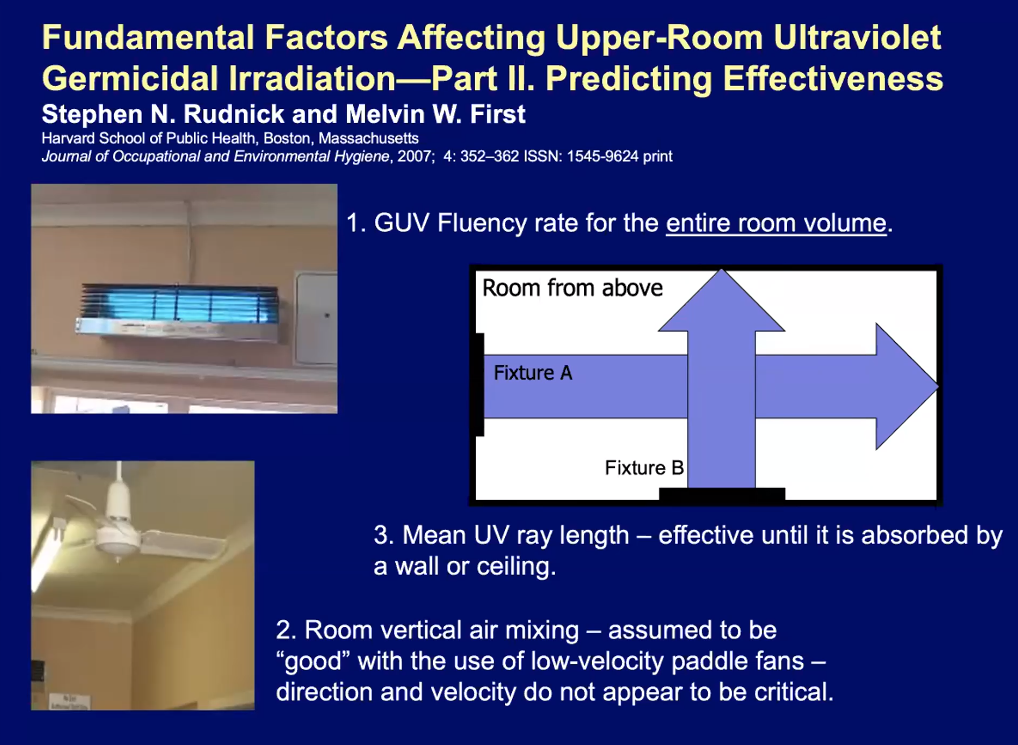
The three main factors that must be considered for the effectiveness of the Upper-Room Ultraviolet Germicidal System are:
- How much Germicidal Ultraviolet Light and in what way it is emitted by the fixture. This depends on the design of each Upper-Room fixture, and it is a fundamental aspect.
- Lenght of the Light emitted by fixture.
- Good natural convection conditions, or increased by ceiling fans, HVAC.
At LIGHTDIS we are manufacturers of Germicidal Ultraviolet Upper-Room Fixtures and we Design the Protection of your Facilities to maximize efficiency by avoiding infections, even above the basic efficiency value of 80%. It is a technology with the Highest Efficacy Avoiding Contagions by Aerosol-Transmissible Diseases, the Best Cost/Effectiveness ratio and the Best Return on Investment.
Our fixtures hold International Patent and the efficiency and safety in the emission of Ultraviolet Light of our designs is evaluated by accredited laboratory in accordance with the applicable international standards, this data being available to our clients.
If you need any additional information, advice or estimation for your project, do not hesitate to contact us at info@lightdis.com, or use our contact form.
